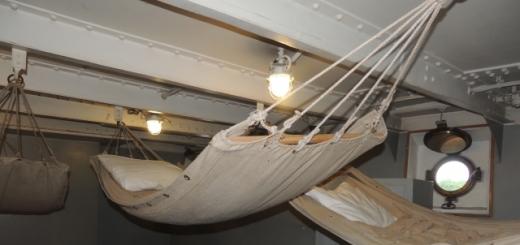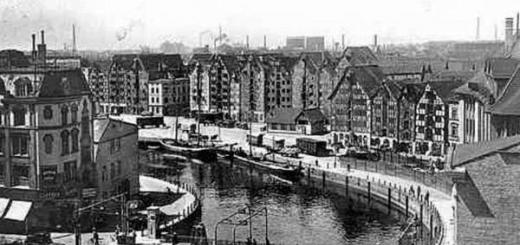Combining kindergartens and schools is a topic of current interest, but not a new one. Back in the early 90s, an experiment was conducted in the capital to create educational complexes, but the experiment failed miserably. The failure can be explained by the legal inconsistency of the system at that time: educational complexes were not formalized in any way and it came to the point that teachers were not credited with the length of service in such joint institutions. The merger of kindergartens and schools, in addition, took place under the auspices of the continuity of education, but in reality nothing has changed and the words about continuity remained only on paper.
Now officials have returned to the idea of reviving the experiment. It must be said that such integrated centers have been operating successfully abroad for a long time. Therefore, if we are talking about the USA, Europe, then there the child begins to go to school from the age of 4 - not to a classical school in our understanding, but to the preschool department of an educational center.
Teachers and parents treat the “second wind” with caution, and some even with prejudice. What are their fears and why are not all institutions happy to support the idea of rallying?
Combining kindergartens and schools: what in fact
The educational complex includes several kindergartens and schools, united legally. The director of the school is at the head of the complex. Heads of kindergartens become heads of departments. It is quite natural that duplicative positions (for example, an accountant or a methodologist) are reduced.
Among the goals of the associations is also indicated "the opportunity for more children to receive a much better education." The situation before the experiment developed in such a way that in each district there were prestigious schools and kindergartens, which, of course, everyone aspired to get into, and less popular institutions, which remained half-empty due to a shortage. Officials, by combining strong institutions with weak ones, hope to “pull up” the latter and make all kindergartens and schools in the districts attractive to citizens.
However, in fact, prestigious schools are merged with other prestigious schools and kindergartens. Not a single, let's call it, "elite" educational institution will agree to unite with an institution that is not quoted by the population. Therefore, one of the stated goals of the merger is not realized.
At the same time, those educational institutions (as a rule, they can be attributed to popular among the population) that oppose the merger, in fact, risk being left out of work: all “strong” schools and kindergartens will already be reorganized into educational complexes, for which the new unit - a burden.
Combining kindergartens and schools: pluses
One of the essential and most important advantages of the association is cost savings. In the capital, as we know, per capita funding has been introduced, that is, money is allocated not for the entire institution, but for one student or pupil. The more children are included in the educational complex, the richer it is. In light of the reduction in staff, free funds appear that can be spent on improving equipment, purchasing methodological material, and bonus payments to teachers.
Small educational institutions with few people could not afford qualified specialists: speech therapist, swimming instructor. In the educational complex, this becomes possible.
In addition, it enhances continuity of preschool and primary school education. Emphasis is placed on introducing the child to the school even before he goes to the first grade. The child has time to adapt to the school walls before the official admission to school.
Importantly, the resources at the disposal of one institution of the complex become available to other departments: a library, a swimming pool, a gym, a sensory room, and so on.
Combining kindergartens and schools is promising in terms of building a dialogue in the professional sphere. Teachers exchange experiences, choose the most optimal system of relationships, pay salaries, for example.
For parents, the educational complex is a great advantage, since they do not have to fight for a "place in the sun" for their children. Children attending a kindergarten as part of an educational complex automatically enter a school from the same complex. They can, of course, go to another school if there are places.
Combining kindergartens and schools: cons
One of the main disadvantages is downsizing. Many teachers are losing their jobs, and finding new ones is not so easy.
Wherein, workload on remaining staff increases. Not all directors are ready for expanded powers. As you know, managing a large country (in this case, an educational complex) is much more difficult than a small state (a school).
The leaders of kindergartens have other concerns: from their point of view, the experiment should have been carried out in a different direction. Instead of combining two different levels of education, it would be logical to consolidate preschool institutions of the same order. In addition, charitable funds that used to go to the account of a preschool institution and could be spent freely at the discretion of the head of the kindergarten and the governing council will now be controlled by the head of the school, which will significantly limit the freedom of action with finances.
Many believe that integration, which is experimental and not fully developed, will lead to dictatorship of the school over the kindergarten. In fact, this will be expressed in the fact that the school will try to include in the kindergarten program as much material as possible to prepare for the first grade. Instead of the priority game direction in the preschool program, which, by the way, is prescribed in the new Federal State Educational Standards, the emphasis will be placed on preparing the child for the first grade - that is, learning.
How the experiment will end is not yet clear, just as it is not entirely clear for all participants in the process: teachers, leaders and parents, a clear scheme for the work of the educational complex. Nevertheless, the experiment continues to gain momentum, and the Department of Education is replenished with applications for the merger of kindergartens and schools.
Opinions:
Maria Yasnova:
- Nonsense. Kindergarten is kindergarten, school is school. Two different institutions. They study at school, relax in kindergarten before school. What's the point of combining them?
Veronica 65:
“It feels like we've been through it all before. My daughter is already grown up. In the early nineties, it was like this: a kindergarten was attached to a school, a preparatory group worked in the kindergarten, in which teachers from the school taught.
Anna Aleksandrovna:
“But I think that this is a great idea, very humane for a child. In a few years of being in the garden, the child will get used to the children and will go to school with the same children, he will experience less stress. At the same time, the program in kindergarten and school will most likely be the same. For example, now in many schools they study according to the “School 2100”. It is very difficult for children. If you start with it in the garden, then everything will go like clockwork.
Zhenya Alakina:
— I live in the north of Moscow. At us too with might and main there is an association of schools and gardens. True, what it is and why it is done - no one understands. Teachers, it seems, do not mind - they are promised an increase in salary, and kindergartens, on the contrary, are not eager.
Consolidation of schools and kindergartens in Moscow became commonplace. Such a process was supported by the Department of Education back in 2012. From that moment on, new types of educational institutions began to appear - educational centers.
The initiative was gloomily received by the public, but still many applications were submitted from various institutions. Only in the first year of the introduction of the "experiment" 1,411 applications were accepted for the creation of 445 educational complexes. But not all applications were satisfied. Only 300 such centers have been established, comprising 849 educational institutions.
It should immediately be noted that the strict principles associations of kindergartens, schools in Moscow was not noted. Most often, educational centers were created on the basis of institutions that had territorial overcrowding and were not separated by major roads. In addition, a certain trend was noted, weak establishments merged with strong ones. It should be noted that this was a fairly rational action.
Despite the fact that the goal of such a process is to increase the level of security, there are opponents of such a merger. With the help of the article, we will deal in detail with all the pitfalls of such a process, point out the pros.
Merging Benefits
A new experiment in our country with the creation of educational complexes based on educational institutions is not new. Moreover, in Europe and America, such establishments have been successfully functioning for a long time. What are the advantages of a merger? Let's list the key benefits.
The Tartu Regional Court, having considered the complaint of two parents whose children go to the "Zolotaya Rybka" kindergarten and the complaint of the director of this preschool institution Tatyana Korelina, ruled on July 3 to apply the primary legal remedy and suspended the decision of the Narva City Council to merge the kindergartens until the final proceedings in the court "Goldfish" and "Penguin".
In its decision, the court pointed out that the application of the parents from the "Golden Fish" kindergarten has a perspective in the administrative court, at the same time, the director of the kindergarten has the opportunity to present his justifications for the unlawfulness of the reduction to another court - the county court, writes "ERR.ee"
The Court considers, on the basis of the parent's statement, that the interests of the children may be adversely affected. However, he pointed out that the applicants would have to provide convincing evidence of their innocence.
According to lawyer Alexander Gamazin, who represents the interests of the applicants in court, he will rely on the fact that after the merger of kindergartens, one director, one head teacher and one supply manager will not be able to fully control the work of the staff well enough, which will negatively affect the work of preschool institutions. "Children will be in two different kindergartens, the director or the caretaker will not be able to be at two sites at the same time to check the work of staff, food preparation, and monitor hygiene. Control will weaken, so parents' concerns are justified."
According to Gamazin, the district court made a formal decision regarding the director of the kindergarten, based on one of the explanations of the Supreme Court. However, the lawyer promises to substantiate to the court that the labor rights of the kindergarten staff, including the director, have been violated precisely because of the challenged decision of the Narva City Council, which adopted a resolution on the merger of kindergartens.
Although the court did not uphold the kindergarten director's complaint, according to Gamazin, the legal remedy to suspend the merger of kindergartens applies to the entire Golden Fish team, so local authorities cannot fire people until the court case passes and a final decision is made.
Representatives of the defendant, the city of Narva, pointed out to the court that the rights of the parents were not violated, they would be able to enter the board of trustees of the united kindergarten and control its work. Their children will not suffer at all from the merger of kindergartens, since their groups will be located, among other things, in the premises of the Golden Fish kindergarten.
The decision of the Tartu Regional Court has not yet entered into force, the parties have the right to appeal against it within 15 days.
It should be reminded that on March 26, the Narva City Assembly, by a majority vote of deputies, decided to merge the kindergartens "Golden Fish" and "Penguin". On April 15, the Jõhvi Court House received a complaint from the parents of the pupils of the "Golden Fish". The plaintiffs asked to annul the decision No. 24 of the Narva City Council regarding paragraphs 3.1.2 and 3.1.3, which dealt with the merger of preschool institutions and petitioned for primary legal protection - that is, the suspension of the relevant decision. The trial court did not grant this request.
Arthur Tooman, ERR
Due to their multifunctionality, such buildings can alternately be an elementary school, a kindergarten, or a combined educational institution combining preschool groups and an elementary education building.
The transforming building will change its purpose depending on the needs of the area. Refurbishment can be done during the summer holidays. It will cost much less than building another building.
“The need for kindergartens and schools is constantly growing, so the city is looking for new ways to resolve the issue. The idea of building transformer buildings arose several years ago. On behalf of the mayor of Moscow, Sergei Sobyanin, standard architectural and technical solutions were developed for a combined elementary school block with a preschool department, -
Marat Khusnullin
Deputy Mayor of Moscow in the Government of Moscow for urban planning policy and construction
For example, a kindergarten for 300 kids can accommodate 12 preschool groups. When transformed into an elementary school, the group rooms are transformed into 12 classrooms. The combined block will accommodate four elementary school classes and eight preschool groups.
In 2018, it is planned to commission three transformer buildings at the expense of the budget.
A combined BNK with a preschool department for 300 children will be built as part of school No. 1985 in the north-west of the capital in the Kurkino district at the address: st. Vorotynskaya, ow. 12, bldg. 3.
The same block of primary classes with the possibility of transformation will be erected at gymnasium No. 1786 in the South Butovo district in the south-west of the capital at the address: st. Admiral Lazarev, 77 (ZHSK "Alfa").
There will be four classrooms on each floor of the three-story buildings. If BNK is transformed into a kindergarten, then the classes will be adapted for 12 groups. On the ground floor, there will be a wardrobe, a dining room for 150 people, speech therapist, psychologist and medical offices.
There will also be a circle club with the possibility of transformation into a room for extended day groups and a hall for music and physical education.
The second floor will be occupied by a gym with a locker room, showers and toilets, rooms for extended day groups and an assembly hall with 243 seats.
On the third floor, a library with a reading room and a media library, a teacher's room, a methodological room, additional education, labor, technical modeling and technical toys, fine arts and nature rooms will be equipped.
When transformed into a kindergarten for 300 children, classrooms with recreation areas and toilets are transformed into 12 groups of four on each floor.
The dining room becomes a group for a short stay of children, the assembly hall - a music hall, the library premises - a circle for classes on computers and a hall for choreography.
Showers and changing rooms at the gym are used as technical premises: storerooms, laundries, etc. The gym, first-aid post and administrative premises will retain their function. The transformation will be carried out with the help of dismantling and additional construction of partitions.
BNK for 300 places with the possibility of transformation into a kindergarten will be built for secondary school No. 2109 in the south-west of the capital in the Yuzhnoye Butovo district at the address: microdistrict Shcherbinka, md. 3, st. Brusilova, d. 29, bldg. one.
The building will also have three floors. Each floor will house four classrooms that can be transformed into groups for preschoolers.
On the first floor there will be bedrooms for after-school groups, an assembly hall for 243 seats, a canteen for 150 seats, a medical office and a cloakroom for an elementary school.
The second floor will be occupied by a gym with locker rooms, toilets and showers and a room for extended day groups, the third floor will be occupied by a library with a reading room and a media library, a room for an extended day group, a speech therapist's office, a psychologist's office, a teacher's room and an administration office.
At a briefing held on April 16, 2015 by Nizhny Novgorod Deputy Head of Administration Maria Kholkina, journalists were told in detail how kindergartens are being optimized, what will happen to schools in Nizhny Novgorod, as well as to institutions of additional education.
First of all, Maria Mikhailovna introduced everyone to the following figures:
There are 561 educational institutions in the education system of Nizhny Novgorod. Of these, there are 186 schools, 339 kindergartens, the rest are institutions of additional education: music schools, art schools, sports schools, etc. 111,000 children study in schools, and 63,000 attend kindergartens. In total - 174 thousand children.
Which schools and kindergartens are to be merged?
As the deputy head of the administration of Nizhny Novgorod explained, we have such a geographical and historical reality that some schools are empty. For example, if in the 40s, 50s, 60s. the residential area in the Stankozavod area was rapidly developing - a lot of people worked at the plant, a large number of children studied at school - now, when production has decreased over the past 20 years, the microdistrict is dying out, there are no such number of workers, schools are empty, kindergartens are empty, but the buildings stand. What to do with it? This is where optimization is needed. But how widespread are empty schools in Nizhny Novgorod?
Maria Kholkina cited the following figures: in Nizhny Novgorod, out of 186 schools, up to 100 people study in one school, from 100 to 200 people study in 12 schools, from 200 to 300 people study in 12 schools, from 300 to 500 people study in 29 schools, in 39 schools - from 500 to 700, in 45 - from 700 to 900, and only 31 schools in the city have 900 students and more.
The economic effect, according to experts, is achieved in schools where more than 600 children study. If there are less than 600 students in schools, they are not yet called small, but these are schools that are not economically viable. Why? Because the school building is designed for 1,000 students, it must be maintained, in addition to teachers, it is necessary to maintain technical support staff: supply manager, locksmith, electrician, etc. But school money is now allocated according to the number of students! And in the classes of such a school, instead of the normative 25 people, for example, 17 or even 14 people study. And for such a number of students there should be a full set of teachers in all subjects who need to be paid salaries from the same money. It is clear that the shortage of students in the school becomes economically inefficient.
“So, when we analyzed all this,” said Maria Mikhailovna, “in September 2014, we had a kind of explosion. The directors did not expect such an economic effect. And it turned out that 231 million rubles were not enough for salaries in the city. This is great! Now, when a sufficiently large amount of time has passed, the directors understood everything - this is how the new system works. Now the principal can't afford a part-time head teacher who also does OBZh 4 hours a week. It so happened that when we began to study the staffing tables, such amazing distortions opened up for us! If the standard calculates that 30% of the administrative and technical, support staff is allowed in the staffing table of the school, and 70% should be teachers, then we saw that there are schools where this ratio is 50 to 50 and even 60 to 40. That is, that happened?
In accordance with the May 2012 Presidential Decree on salary increases, we are fighting to ensure that teachers have salary increases, and every year we increase them. I can say that in 2011 the average salary of a teacher was 13 thousand rubles, and already in 2014 it was 27 thousand rubles. Some have less, some have more, but the increase in teachers' salaries is quite noticeable. They feel it for themselves. And if teachers complain that there is no growth, we understand. And it turns out that, for example, a physical education teacher has a load of 11 hours a week. What growth are we talking about here?
Exactly the same story, as noted by Maria Kholkina, has been happening with kindergartens since 2015, when per capita funding began. The maintenance of one child costs 63-65 thousand rubles. It is more than at school, because. here the food is different, and the care is different, etc. And the problem with kindergartens is somewhat different. “25% of kindergartens in Nizhny Novgorod are 4-group. Only 4 groups! - explains the deputy head of administration. - But, should there be a manager? Must. There should be a methodologist, a housekeeper - to give out linen, a janitor, a locksmith, cooks ... That is, staff is needed, and there are only four groups. What to do? We need optimization!”
So what is optimization?
As Maria Kholkina explained, this is a necessary association at the level of legal entities. Since small schools and kindergartens do not survive on their own, it means that two legal entities - two schools or a kindergarten - should be made into one.
“That is, we do not touch the building, or the children, or the teaching staff,” Maria Mikhailovna specified. - The buildings are the same, the teachers are the same, we only work with paperwork. For example, we have kindergartens, as they say, "fence to fence" - two legal entities that each have their own head and the entire staff. And we combine them into one, and we get one legal entity not with 4 groups, but with 8, but with one director or manager, one methodologist, etc., and they survive. None of the buildings are being moved anywhere! There is a work only with legal entities, with documents. That is, they took institutions that are located side by side, so that it would be clear to parents, children, and the teaching staff, and combined them into one legal entity. The number of the kindergarten will be the one that was at the kindergarten, to which it legally joins.
School optimization is as follows. For example, two schools are located at a distance of 800 meters from each other. Both schools are empty. When they are merged, it will be one legal entity, with one building housing the elementary school and the other housing the secondary school. Thus, in addition to the economic effect, there will be another very important point - all schoolchildren will be able to study only in the first shift.
What will happen to the employees of the joint institutions?
 The deputy head of the administration of Nizhny Novgorod answered this question as follows: “In this case, only those rates that are duplicated are subject to reduction. Cooks, for example, will remain - the cook will not run from one building to another. But why two janitors when he cleaned in 4 hours in one area and left? Or, what is a social educator? There are those who work little by little, say, for 4 hours, in different places. Here we will also look - we need one or two social teachers in the united kindergartens - depending on the contingent and what their workload is. Or a defectologist? He does not work with every child in kindergarten. In addition, children in the kindergarten have a strict regime, i.e. The defectologist does not work with children when they are studying, eating or sleeping. There is such a thing - unloaded.
The deputy head of the administration of Nizhny Novgorod answered this question as follows: “In this case, only those rates that are duplicated are subject to reduction. Cooks, for example, will remain - the cook will not run from one building to another. But why two janitors when he cleaned in 4 hours in one area and left? Or, what is a social educator? There are those who work little by little, say, for 4 hours, in different places. Here we will also look - we need one or two social teachers in the united kindergartens - depending on the contingent and what their workload is. Or a defectologist? He does not work with every child in kindergarten. In addition, children in the kindergarten have a strict regime, i.e. The defectologist does not work with children when they are studying, eating or sleeping. There is such a thing - unloaded.
What will happen to the leaders? It is clear that if 4 kindergartens are merged, as, for example, in the Avtozavodsky district, where preschool educational institutions No. 103, 36, 42 and 99 are merged, then we choose one of the 4 heads, which is young, there is every opportunity to develop this enterprise and then build it up with some interesting ideas: quotas, projects, etc. However, if we see that at the age of 62 the manager will still give odds to 40-year-olds, then we say: you stay, work and teach your shift, transfer all your knowledge and skills. We are fighting to ensure that not a single valuable cadre leaves the education system. We are doing personal work.
Since September 2014, when it all started, 780 units have been excluded from the staff lists - these are those vacancies that were a dead burden, or some kind of part-time jobs. Not a single person was reduced, but only positions were excluded. This gave an economic effect of 78 million rubles.
The resolution on the optimization of kindergartens was signed by the head of the administration of Nizhny Novgorod in early April, now everyone has been informed and legal work has begun: it is necessary to rewrite the charter, register the newly formed institution, etc. The resolution on the optimization of schools is still being finalized.
In total, 29 schools in Nizhny Novgorod, 69 kindergartens and 8 organizations of additional education will be involved in the optimization. Thus, out of 106 organizations involved in optimization, the output will be 54.










